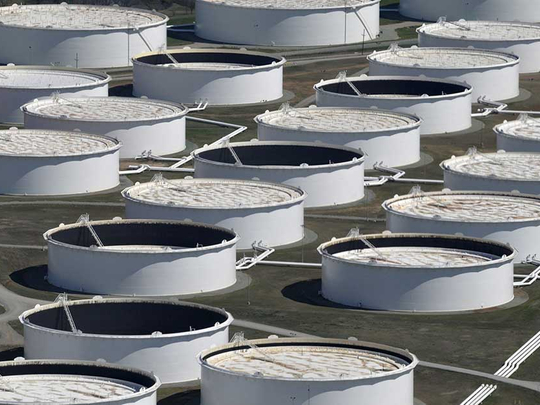
Abu Dhabi: Oil prices continued to move upwards on Wednesday with Brent trading above $40 for the first time in three months, as oil markets reacted positively to reports on Opec+ possiblyextending their production cuts.
Prices have already been steadily rising for the last month as global economies reopen from lockdowns along with production cuts of almost 10 million barrels per day (bpd) by Opec+. Both benchmarks of Brent and West Texas Intermediate (WTI) have now seen prices end on five consecutive weekly highs.
“Opec+ is debating whether the deep level of cuts that were due to be in place for just May – June 2020 should be extended to keep inventories from widening out even mor. The sharp improvement in spot prices in the past month may encourage Opec+ to keep deep cuts in place,” said Edward Bell, commodity analyst at Emirates NBD.
“Were Opec members to extend the deeper cuts until the end of August the implications for oil output from the GCC economies would be sharp. Based on the Opec+ agreement, Saudi production is set to decline by nearly 5% year-on-year in 2020 but cutting deeper for longer would push the trajectory to a near 8% drop,” he added.
Bell noted that should production cuts be extended, oil prices would likely find support in the same current price range.
“We are hesitant though to assign much chance that prices would improve considerably beyond their current range of $30-40/b.
“Opec cuts tend to reinforce the bottom of the market but demand improving steadily would be required to allow prices to move higher on a more sustained basis,” he added, highlighting how demand would ultimately be the main driver of prices extending significantly beyond what they are now.
Offseting deficits
On the economic impacts of higher oil prices, Iyad Abu Hweij, managing director at Allied Investments Partners PJSC, said higher prices would mean an offsetting of government deficits.
“While oil production cuts may put GCC budgets even deeper into deficit, the gradual increase in price will help offset the deficits and will benefit the economies in the long run.
“We believe that the UAE economy will benefit from its economic diversification efforts. The economy is already showing some signs of recovery as the Purchasing Managers Index (PMI) increased in May to 46.7 from 44.1 in April,” he added, noting that the UAE was still in a strong position to continue weathering low oil prices.
“It is vital that the Opec+ considers the production cut at least till the end of this year or even beyond while monitoring the market developments for a gradual recovery or prices,” Hweij said.
Shale response
With WTI prices also continuing to rebound from its historical low back in April, which saw it hitting negative for the first time, reports have been coming out from Bloomberg and Reuters on the US shale industry planning to reverse production cuts that it had put in place.
Despite some producers planning to bring back production, shale is still forecasted to see a big drop in production this year, with the International Energy Agency estimating shale could see production down by 2.8 million bpd this year compared to 2019.
Data coming out of the US shows that rig counts continue to drop on a weekly basis, with a decline of another 222 last week, down overall 567 year-on-year.








